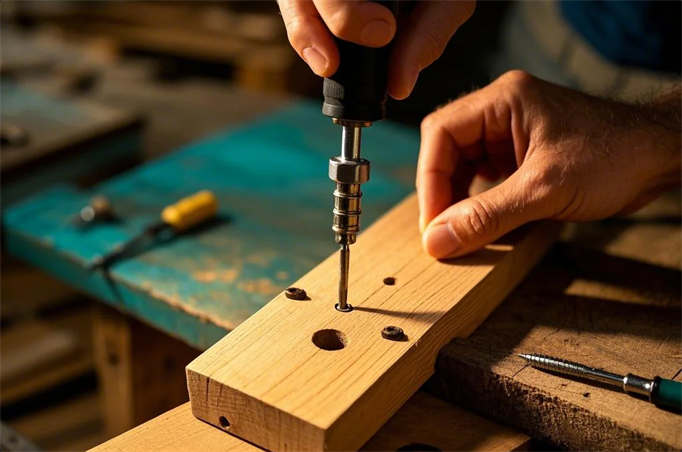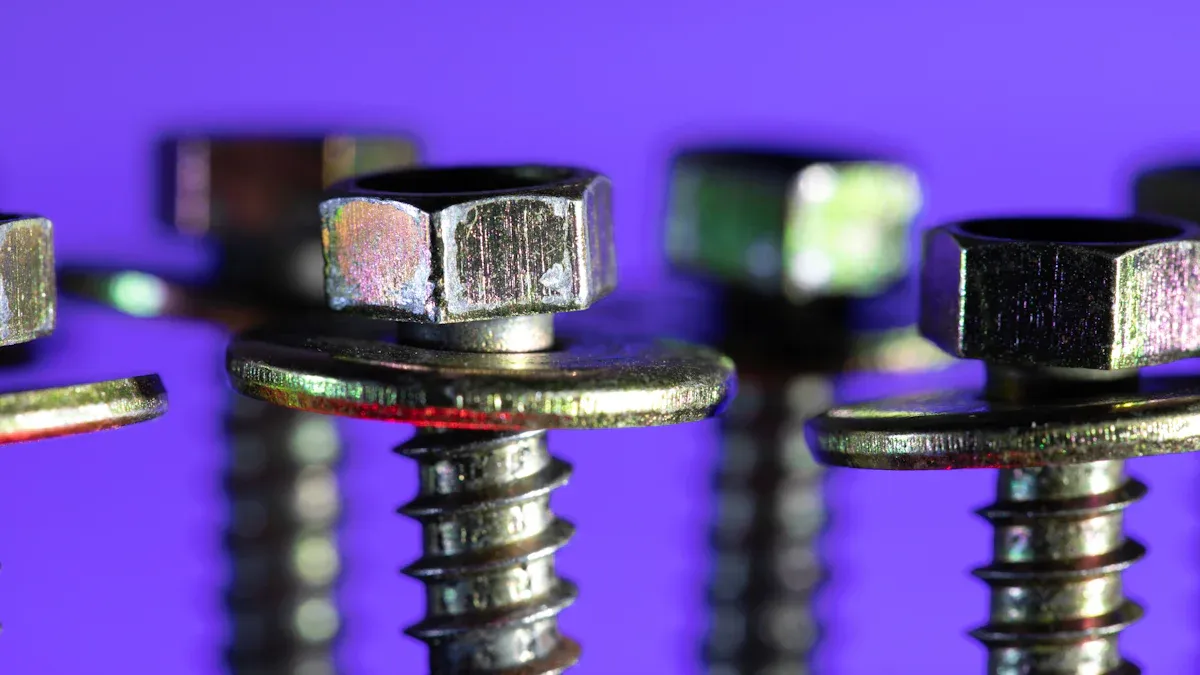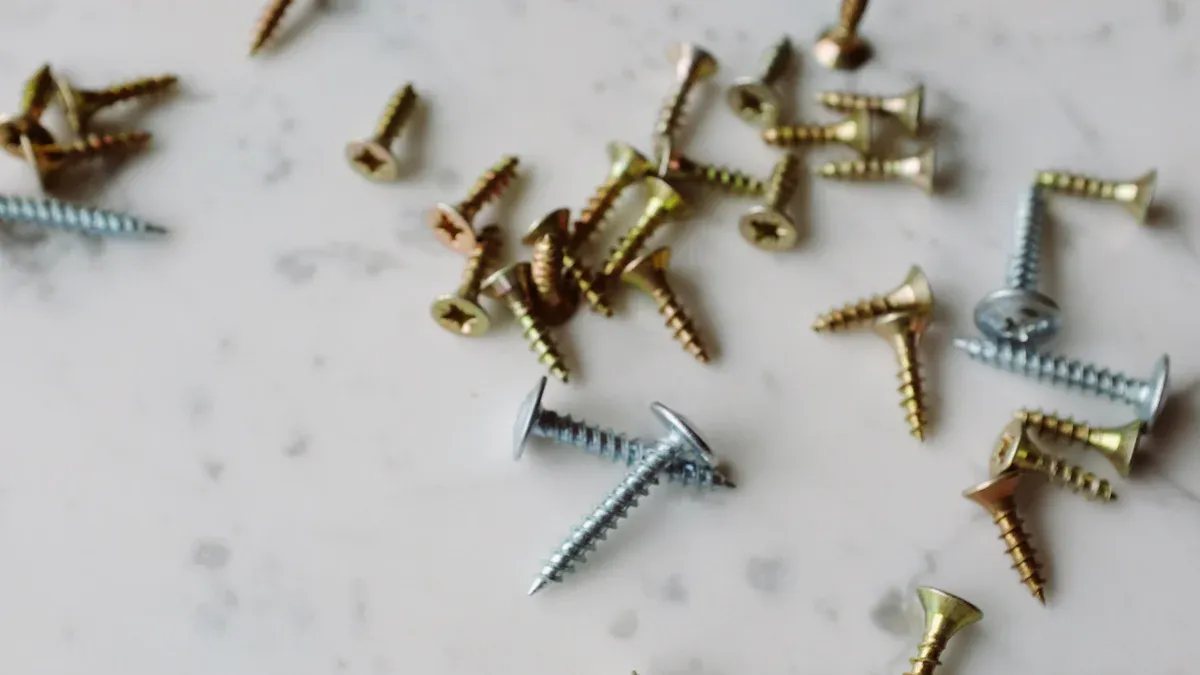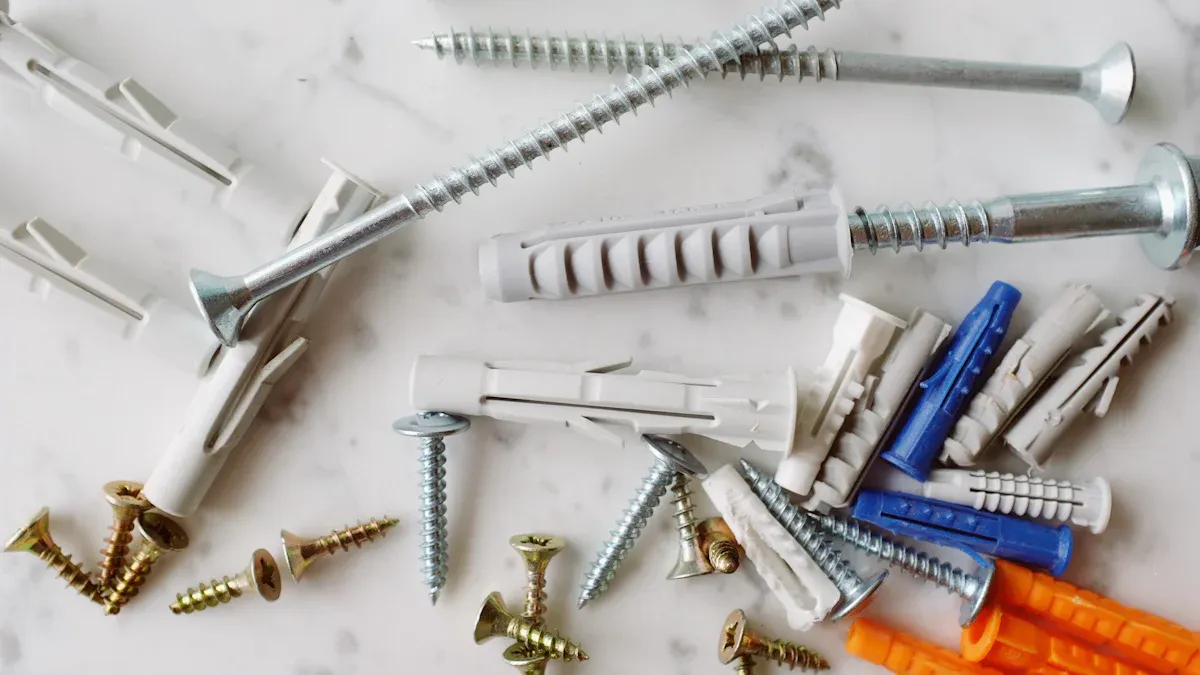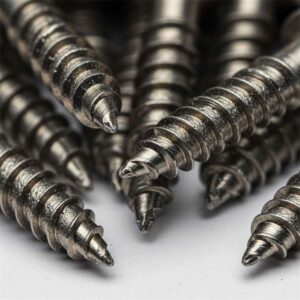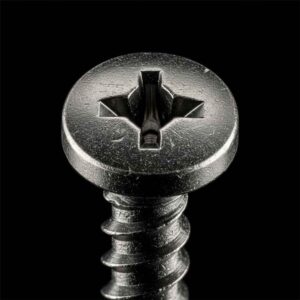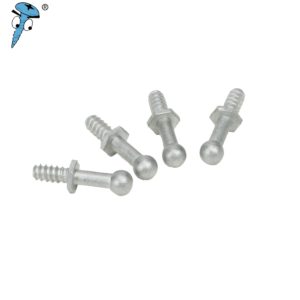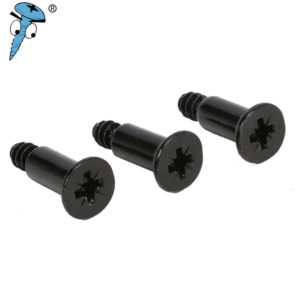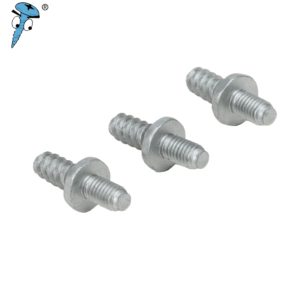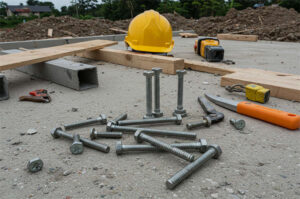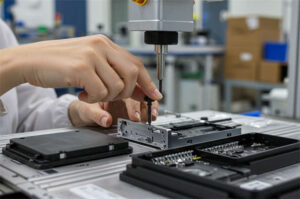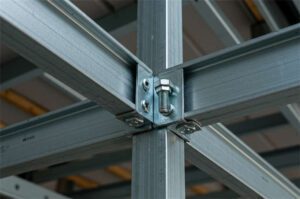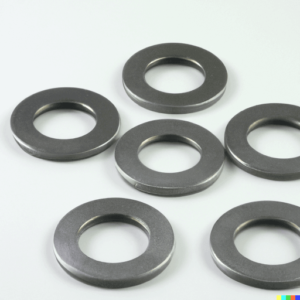You should choose a self tapping screw for wood if you want strong joints and less risk of wood damage. Picking the wrong screw can cause problems such as weak connections, broken material, or even splitting the wood. Using the correct screw keeps your project safe and sturdy.
Principais conclusões
- Escolha parafusos autorroscantes for strong joints in wood projects. They create tight connections and reduce the risk of wood damage.
- Use self-drilling screws for quick assembly. They eliminate the need for pilot holes, saving you time and effort during installation.
- Sempre match the screw type to your project needs. Consider wood type, thickness, and whether you need speed or strength for the best results.
Quick Answer: Best Screw for Wood
Main Recommendation
You should use Parafusos de madeira or self-tapping screws for most wood projects. Professional carpenters often recommend these screws because they create strong joints and help prevent damage to the wood. You can see which screws experts use most often in the table below:
| Tipo de parafuso | Descrição |
|---|---|
| Parafusos de madeira | Commonly used for installing drawer slides and hinges, with specific sizes recommended. |
| Pocket Hole Screws | Designed for pocket hole joinery, featuring a pan or washer head to prevent deeper countersinking. |
Self-tapping screws work well for wood because they cut threads as you drive them in. You do not need to worry about splitting the wood if you choose the right size and type. Parafusos autoperfurantes can also work for wood, especially if you want to save time. These screws drill their own pilot hole, which means you do not need extra tools.
Por que é importante
Choosing the right screw helps you avoid problems like weak joints or broken boards. You want your project to last and stay safe. Self-drilling screws save time because you do not need to drill a pilot hole first. You can use them for quick drilling into wood, metal, or light-density materials. This makes them a good choice for fast construction or woodworking jobs.
- Self-drilling screws eliminate the need for a pilot hole.
- You save time and reduce the number of tools you need.
- The threads stay strong, so your joints hold up well.
If you want reliability and speed, self-drilling screws offer both. For most wood projects, self-tapping screws give you the best results. Always match the screw type to your project needs for the strongest and safest outcome.
Self Tapping Screws for Wood
What Are Self Tapping Screws
You often see a self tapping screw for wood in many woodworking projects. This screw has a sharp, hardened tip that lets you drive it directly into wood without drilling a pilot hole. The threads cut into the wood as you turn the screw, creating a tight fit. You can use a self tapping screw for wood when you need to join wood to metal or other materials. The design makes installation quick and easy, especially when you only have access to one side of the material.
Tip: Self tapping screws create their own holes, so you save time and effort during assembly.
Here is a table showing the main features:
| Recurso | Descrição |
|---|---|
| Sharp, hardened tip | Penetrates wood and metal easily |
| Optimized thread design | Holds materials together securely |
| No pre-drilling needed | Speeds up installation |
| Strong joint assurance | Keeps connections tight, even in thin materials |
Using Self Tapping Screws in Wood
When you use a self tapping screw for wood, you get strong joints that resist pull-out forces. These screws work well in softwoods and hardwoods. You can improve holding strength by driving the screw at an angle between 30° and 60° to the grain. This method helps the screw grip the wood better. Self tapping screws show about three times more resistance to being pulled out than to being pushed sideways. You should choose a self tapping screw for wood if you want reliable connections in cabinets, furniture, or outdoor projects. You do not need special tools, and you avoid splitting the wood if you pick the right size.
- Parafusos autorroscantes make assembly faster.
- You can use them for joining wood to metal.
- They work well when you cannot drill a pilot hole.
A self tapping screw for wood gives you confidence that your project will last.
Self Drilling Screws Overview
What Are Self Drilling Screws
You may notice that self drilling screws look different from regular screws. These screws have a sharp, pointed tip that works like a drill bit. When you use self drilling screws, you do not need to make a pilot hole first. The tip cuts into the material and creates its own hole as you drive the screw in. This design saves you time and effort, especially when you work with hard materials.
Here is a table that shows how self drilling screws compare to self tapping screws:
| Recurso | Parafusos autoperfurantes | Parafusos auto-roscantes |
|---|---|---|
| Pilot Hole Requirement | No | Sim |
| Materiais adequados | Hard materials, metals, composites | Softer materials like wood, plastic, drywall |
| Tip Design | Pointed tip like a drill bit | Standard tip |
| Usos comuns | Joining metals, permanent joins | Woodwork, furniture assembly, lightweight composites |
| Application Flexibility | Versatile for various materials | Limited to softer materials without pre-drilling |
Self Drilling Screws in Wood
Você pode usar parafusos autoperfurantes in wood for fast and easy installation. The tip acts as a drill bit, so you push the screw into the wood without extra steps. The notched area at the tip helps manage wood chips, which keeps the wood strong during installation. Self drilling screws often use hardened steel, making them tough enough for quick drilling.
- The design of self drilling screws helps reduce the risk of splitting wood.
- You get a tight grip because the screw makes its own hole.
- The process is faster than using parafusos auto-roscantes, especially for large projects.
If you want to save time and avoid extra tools, self drilling screws give you a big advantage. You can use them for many types of wood, but always check the thickness and hardness before starting. Self drilling screws work well for both softwood and hardwood, giving you strong and lasting joints.
Self-Drilling Screws vs Self-Tapping Screws
Principais diferenças
You see clear differences between self-drilling screws and parafusos autorroscantes when you work with wood. Self-drilling screws have a tip shaped like a drill bit. This tip lets you drive the screw into wood without making a pilot hole. You save time and effort because the screw creates its own hole as you install it. Self-tapping screws have a sharp tip and special threads. These threads cut into the wood and form a tight grip. You often need to drill a pilot hole before using self-tapping screws, especially in hardwood.
The design of self-drilling screws focuses on speed and convenience. You use them when you want to finish a project quickly. The tip drills and the threads hold the wood together. Self-tapping screws focus on strong joints and flexibility. You use them in many wood projects, from furniture to outdoor structures. The threads of self-tapping screws give you high load-bearing potential. You get reliable connections that last.
| Recurso | Parafusos autoperfurantes | Parafusos auto-roscantes |
|---|---|---|
| Tip Design | Drill bit style | Sharp, pointed |
| Pilot Hole Needed | No | Yes (usually) |
| Speed of Installation | Fast | Moderado |
| Holding Strength | Bom | Alta |
| Common Use | Quick assembly | Strong, flexible joints |
Note: You choose self-drilling screws for speed. You choose self-tapping screws for strength and flexibility.
Pilot Hole Requirement
You notice a big difference in how you install self-drilling screws and self-tapping screws. Self-drilling screws do not need a pilot hole. You place the screw on the wood and drive it in with a drill or screwdriver. The tip cuts through the wood and makes its own hole. You finish the job faster and use fewer tools.
Self-tapping screws often need a pilot hole, especially in dense wood. You drill a small hole first. This hole guides the screw and helps prevent splitting. The threads of self-tapping screws cut into the wood and form a strong grip. You get better control over the placement and depth of the screw.
- Self-drilling screws: No pilot hole needed.
- Self-tapping screws: Pilot hole usually needed for hardwood.
You save time with self-drilling screws. You get more control and strength with self-tapping screws.
Efficiency in Wood
You want your wood project to be efficient and strong. Self-drilling screws help you work faster. You skip the step of drilling a pilot hole. You finish large projects quickly. The tip of self-drilling screws reduces the risk of splitting wood. You get a tight grip and a clean finish.
Self-tapping screws give you high load-bearing capacity. You use them in timber construction because they create strong joints. The flexible geometry of self-tapping screws lets you use them in many types of wood. You get reliable results, even in softwood or hardwood. When you load self-tapping screws parallel to the screw axis, you maximize their holding strength. Static tests show that groups of self-tapping screws have consistent strength. You see less variability in holding power when you use more screws together.
- The use of self-tapping screws has increased because of their strong grip and flexible design.
- You get the best results when you load self-tapping screws parallel to the axis.
- Groups of self-tapping screws show stable strength, making them ideal for large wood projects.
Parafusos autoperfurantes work best when you want speed and convenience. You use them for quick assembly and simple woodwork. Self-tapping screws work best when you need strong, lasting joints. You use them for furniture, cabinets, and outdoor structures.
Tip: Choose self-drilling screws for fast jobs. Choose self-tapping screws for projects that need strong, reliable joints.
You decide which screw fits your project by thinking about speed, strength, and the type of wood. Both self-drilling screws and self-tapping screws help you build better wood projects. You get the best results when you match the screw to your needs.
Pros and Cons for Wood Projects
Parafusos auto-roscantes
Parafusos autorroscantes are very helpful for wood projects. You do not need to drill a pilot hole first. This saves you time when you work. You can use these screws in wood, plastic, and metal. They come in different finishes, so your project looks nice. Many self-tapping screws have coatings that stop rust. This helps your project last longer outside.
| Prós | Contras |
|---|---|
| Easy and quick to use | Can be hard to install |
| No need for pre-drilling | Some materials may not work well |
| Good for many types of materials | Not as strong against sideways force |
| Rust-resistant coatings make them last | Can loosen if things shake |
| Look good with different finishes | Hard to use again after removal |
Sometimes, you may have problems with these screws. You need to use the right driver bit. If you use the wrong one, the screw head can get damaged. These screws can also loosen if your project shakes a lot.
Tip: Pick the right screw size and driver bit. This helps you avoid damaging the screw head.
Parafusos autoperfurantes
Self-drilling screws help you finish projects fast. They make their own hole, so you do not need extra tools. You save time and do not need much work. These screws work well in thick or hard wood. They are made from strong materials, so they cost more than self-tapping screws.
| Cost Factor | Parafusos autoperfurantes | Parafusos auto-roscantes |
|---|---|---|
| Material Costs | Made from strong materials, cost more | Made from regular steel, cost less |
| Production Costs | Harder to make, costs more | Easier to make, costs less |
| Installation Costs | Fast to install, saves money | Need pre-drilling, costs more |
| Tool Costs | Need special tools, costs more | Use regular tools, costs less |
| Long-Term Use Costs | Last longer, save money over time | May need to replace often, costs more |
You might need special tools for self-drilling screws. These screws last a long time, so you do not replace them often. You pay more at first, but you save money later.
Note: Pick self-drilling screws if you want speed and strength. Pick self-tapping screws if you want to spend less money at the start.
Choosing Screws for Wood
Fatores a serem considerados
When you pick screws for your wood project, you need to think about a few important things. The type of screw you choose affects how strong and safe your project will be. Here is a table to help you compare self-tapping and self-drilling screws:
| Fator | Parafusos auto-roscantes | Parafusos autoperfurantes |
|---|---|---|
| Furos piloto | May require pilot holes | No pilot holes needed |
| Material Thickness | Suitable for various thicknesses | Requires consideration of material thickness |
| Screw Design Features | Sharp or blunt tips available | Typically has a sharp tip for drilling |
| Wood Type | Effective in soft and hard woods | Best for softer woods but can work in others |
You should always check if you need a pilot hole. Self-drilling screws save you time because they make their own hole. Think about the thickness of your wood. Thin wood can split if you use the wrong screw. Look at the screw tip. Some tips work better in hard wood, while others suit soft wood. You also want to match the screw to the wood type. Self tapping screws used for hardwoods give you a strong grip.
Tip: Choose reliable brands like Wensilon, BNUOK, or VGBUY for better results and fewer problems.
Common Mistakes
Many people make simple mistakes when working with wood screws. Here are some of the most common errors:
- Using the wrong screw type can cause joints to fail or screws to snap.
- Picking screws that are too short or too long weakens your project.
- Forgetting to pre-drill in hardwood can split the wood.
- Over-tightening screws strips the threads and damages the wood.
- Using low-quality tools can ruin the screw head.
- Not checking wood thickness leads to weak joints.
- Choosing the wrong screw for outdoor use can cause rust.
- Misaligned screws make the structure weak.
- Not countersinking screws can leave sharp edges and look messy.
You can avoid these mistakes by planning ahead and choosing the right screw for your project.
You should choose self-tapping screws for strong wood joints and self-drilling screws for speed. Always match screw type to your project. Use this table for quick selection:
| Tipo de parafuso | Melhor uso | Material |
|---|---|---|
| #8 | Cabinets, furniture | Zinc, steel |
| Deck Screw | Outdoor decking | Stainless |
Remember: Check wood type, screw size, and coating for best results.
Perguntas frequentes
What are self drilling screws used for in wood projects?
O usuário usa parafusos autoperfurantes for quick assembly in wood. These screws create their own hole, making them a popular choice for fast installations.
How do I choose the best fastening solution for wood?
You select the best fastening solution by checking wood type, screw length, and coating. Always match the screw to your project needs for strong joints.
Can self drilling screws split wood?
You reduce the risk of splitting wood by using the correct screw size and driving speed. Always check the wood thickness before installation.
